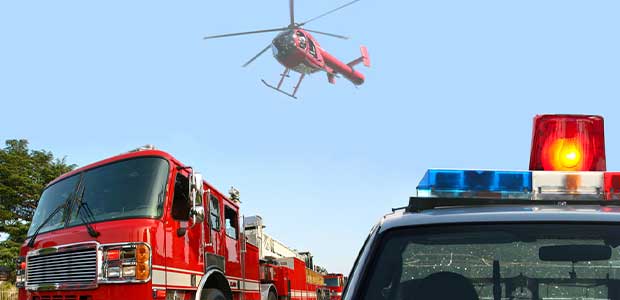
Exposure to Vinyl Chloride Monomer and Combustion Products in a Train Derailment
In what ways can emergency responders be affected by the exposure?
- By Bernard Fontaine
- Mar 07, 2023
Over 2.5 million emergency responders in the U.S. face hazardous exposures while on duty [NIOSH 2013a], and this population has been identified as having the greatest risk of exposure during a disaster [Pak et al. 2008]. Responders to a chemical release following a train derailment must immediately assess the risks by gathering information about the situation, analyzing available options and taking action to implement decisions to protect themselves, the public, other responders and the environment [NIOSH 2004]. According to the U.S. Department of Transportation Bureau of Transportation Statistics, there have been a total of 54,570 freight and passenger train derailments, averaging 1,705 each year between 1990 and 2021.
There have been many questions about whether the burning of the vinyl chloride monomer (VCM) tank cars in the recent train derailment in East Palestine, Ohio, could have resulted in the formation of dioxins and furans. Let’s look at the evidence to date. Of the 38 rail cars derailed, 11 tank cars contained hazardous materials including VCM. One of the VCM tank cars was reportedly leaking. The VCM boiling point is −13.4 degrees Celsius (7.9 degrees Fahrenheit), with a vapor pressure of 2580 mmHg at 20 degrees Celsius (68 degrees Fahrenheit).
Fire impingement to the VCM tank car exterior caused the liquid temperature to rise near the boiling point. In order to prevent a Boiling Liquid Expanding Vapor Explosion (BLEVE), crews began a controlled release of the liquid VCM. VCM was released from five rail cars into a trough that was then ignited, creating a large plume of black smoke over the village of East Palestine. After completing the controlled release, crews began the "wrecking" process, in which the empty tank cars were moved off the tracks and relocated to a safe area nearby. Based on the evidence, could the controlled burn have released hazardous combustion products like PCDDs and PCDFs into the air? Well, here is what we know to date.
East Palestine was not the only recorded railroad incident involving VCM. On Nov. 30, 2012, a train transporting VCM derailed while a bridge collapsed while crossing over Mantua Creek, in Paulsboro, New Jersey, near Philadelphia. Four rail tank cars fell into the creek, breaching one tank and releasing about 23,000 gallons of VCM into the waterway. There was no fire associated with the mishap, but workers and nearby residents were exposed to VCM.
In this case, the National Oceanic and Atmospheric Administration (NOAA) Office of Response and Restoration (OR&R) provided guidance to help local and federal authorities address early concerns about the possible health effects, evacuation decisions, proper protective equipment for responders, impacts to the nearby Philadelphia airport and reactivity between VCM and another rail tank car containing ethyl alcohol. OR&R developed software products responders use to address these issues: ALOHA, an air dispersion model, and CAMEO Chemicals, a hazardous material database.